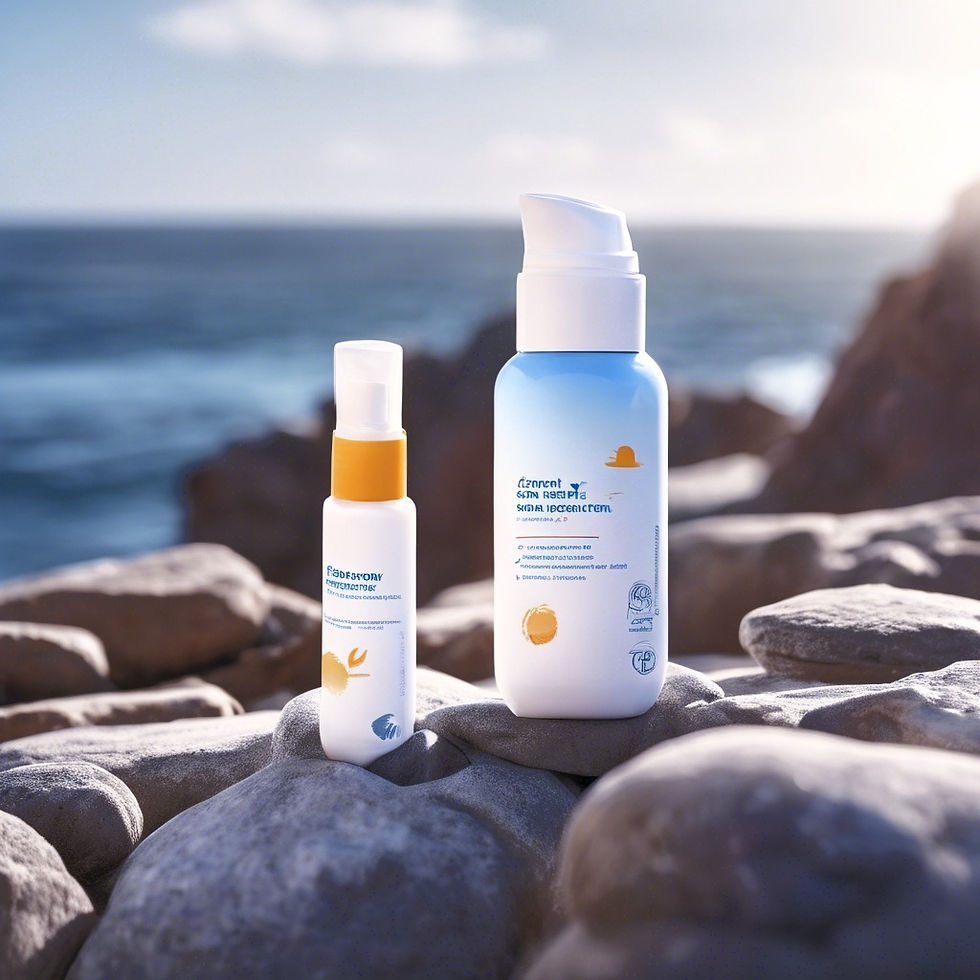The True Potential Behind Retacny and Tretinoin: Your chance to permanently fix your acne problems?
- hustleranikeshbrya
- Jun 19, 2024
- 3 min read

Retinoids are a powerhouse ingredient in the fight against acne.
Two popular options you might encounter are Retacnyl and tretinoin.
But with so many choices, how do you know which one is right for you?
This blog dives into the key differences between Retacnyl and tretinoin, their effectiveness against various acne types, and how they stack up against other acne treatments.
1. The Retinoid Showdown: Retacny and Tretinoin
Tretinoin and Retacnyl are both retinoids...
This means they're derived from vitamin A, which Supercharges cell turnover, unclogs pores, and reduces inflammation completely. However...
There are some key distinctions:
Availability: Retacnyl (a brand name for tretinoin) is a prescription medication, requiring a consultation with your dermatologist. Tretinoin itself can also be prescribed under various brand names.
Strength: Tretinoin comes in a wider range of strengths, allowing your dermatologist to tailor the dose to your specific needs. Retacnyl typically comes in a mid-range strength.
Formulation: Tretinoin is available in various creams, gels, and lotions. Retacnyl is usually offered in a cream formulation.
2. Targeting Your Acne
Let's see how these retinoids tackle different acne types:
Mild Acne: Both Retacnyl and tretinoin can be effective for mild acne with whiteheads and blackheads. Tretinoin might offer slightly faster results due to its potential for stronger formulations.
Moderate Acne: Here too, both are contenders. However, a dermatologist might recommend a higher strength tretinoin for moderate acne compared to Retacnyl.
Severe Acne: For severe acne with deep cysts and nodules, tretinoin is often combined with other acne medications like antibiotics. Retacnyl might not be strong enough on its own for severe cases.
3. Beyond Retinoids: Comparing Treatments
While retinoids are incredibly powerful, they're not the only weapons in the acne arsenal...
Here's how Retacnyl and tretinoin compare to other common acne treatments:
Benzoyl Peroxide: This antibacterial ingredient kills acne-causing bacteria. It's often used in combination with retinoids for faster results but can be drying.
Salicylic Acid: This gently exfoliates, unclogging pores and reducing inflammation. It's a good option for mild acne or as a maintenance treatment.
Antibiotics: Oral antibiotics are prescribed for severe acne to target inflammation and bacterial overgrowth. However, long-term use can lead to antibiotic resistance.
4. Managing Retinoid Side Effects
Both Retacnyl and tretinoin can cause dryness, irritation, and sun sensitivity, especially during the initial adjustment period.
Here are some tips to minimize these side effects:
Start slow: Begin with using the medication every other night and gradually increase frequency as your skin adjusts.
Moisturize religiously: Apply a gentle, fragrance-free moisturizer daily to combat dryness.
Sun protection is key: Since retinoids increase sun sensitivity, use a broad-spectrum SPF 30 sunscreen daily, even on cloudy days.
Conclusion
Choosing between Retacny and Tretinoin depends on your specific acne type and skin sensitivity.
While Retacnyl offers a good starting point, tretinoin's wider range of strengths allows for more targeted treatment.
Consulting a dermatologist will help you determine the best retinoid for your needs and create a comprehensive acne treatment plan. Remember, consistency is key! With proper use, either Retacnyl or tretinoin can help you achieve clearer, smoother skin.
Liked What You Read?
🌐 Find us on [Instagram], [Facebook], and [Tic Toc] for a weekly dose of skincare wisdom just like this one.
🔍 Explore more tips, tricks, and expert insights to elevate your skincare routine. Whether you're a skincare enthusiast or a beauty beginner, our content is tailored just for you.
💬 Share your thoughts, ask questions, and connect with a community passionate about achieving radiant and healthy skin.



Comments